Coolgardie, Western Australia
Articles for mature and senior couples and solo travelers interested in learning about the Outback, Aboriginal history in Western Australia before joining a small group tour.
28 Jun 21 · 7 mins read
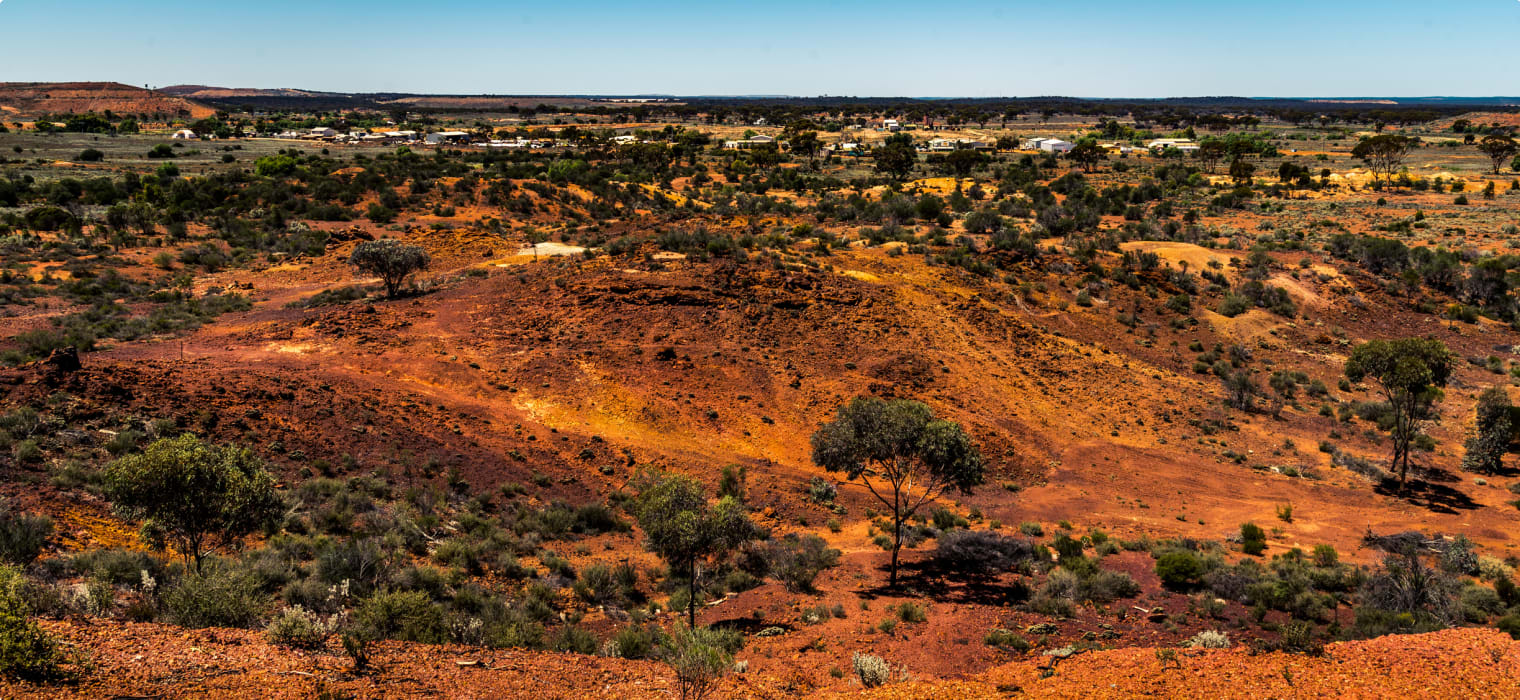
Coolgardie
By Marco Stojanovik
Coolgardie, a small town in Western Australia, 558 kilometres east of Perth, has a grand history. During the Eastern Goldfields goldrush at the turn of the twentieth century, it reigned supreme as the unofficial capital of the region and third largest town in the state. During this time, 30,000 people – mostly gold prospectors – lived in and around the booming town, famed for its alluvial finds. Today, although no longer quite as prosperous, the town is valued as a preserved remnant of those glory days, maintaining much of its 19th century architecture and hosting extensive museum collections.
Odyssey Traveller conducts a tour of Coolgardie as part of our Wildflowers Tour of Western Australia. This 15-day tour across the south west of the state is designed for senior and mature travellers who would like to learn about history and culture with like-minded people in a small group setting (participant number is typically 6 to 12), using the knowledge and expertise of our tour leader and local guides. This article explores the history and attractions of Coolgardie to assist your visit.
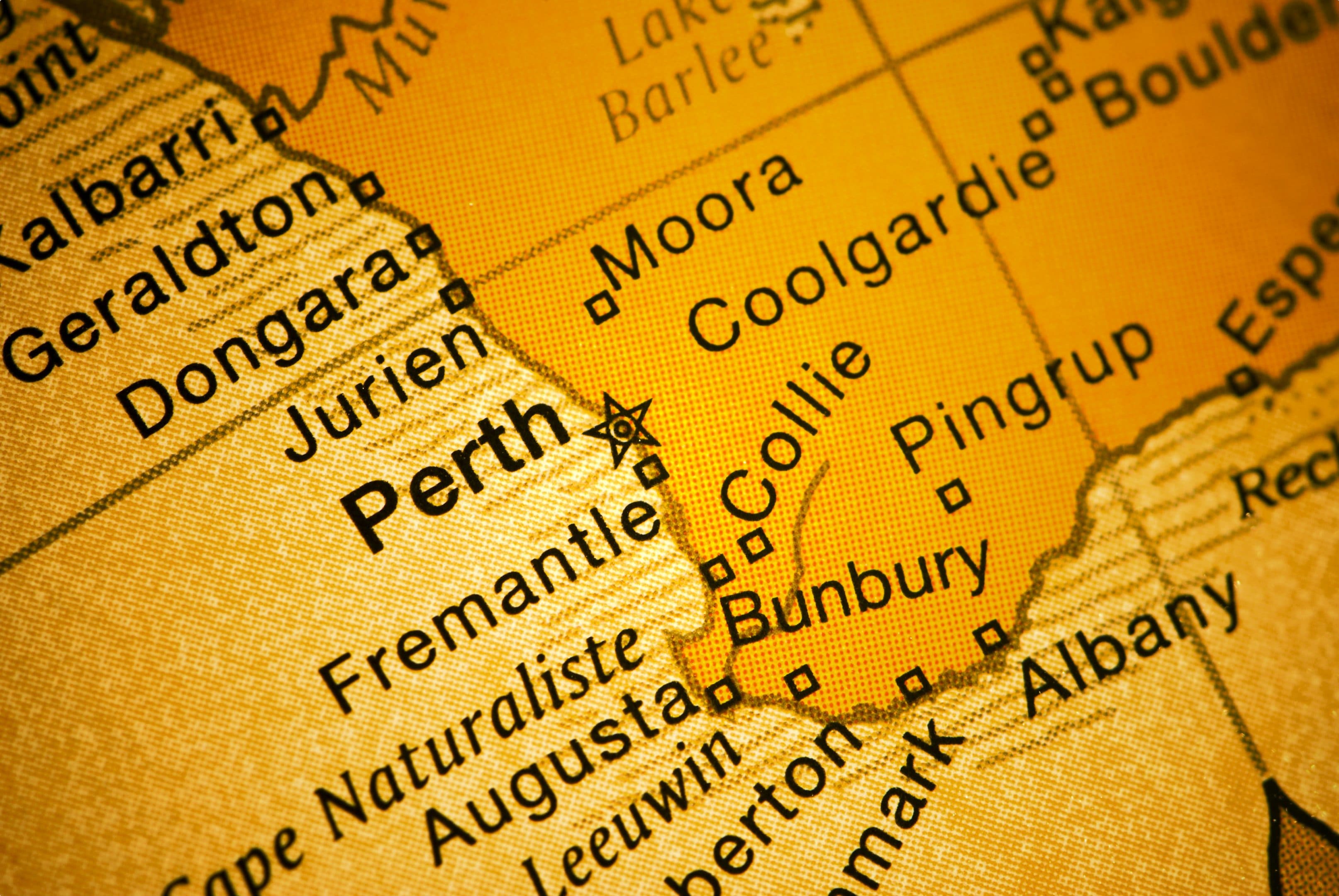
History
Prior to the arrival of Europeans, the area belonged to the Maduwonga Galagu people who spoke the Nadgu Galagu language. Although there is some debate, the name Coolgardie is said to be an anglicized version of a Nadgu Galagu word – either ‘Koolgoor-hiddie’, which means ‘the mulga tree in the hollow’, or ‘golgardi’, the name of a local water hole.
Members of the Maduwonga Galagu are believed to have assisted the explorer Charles Hunt in 1864 in identifying water sources in the area around Mount Burges. ‘Hunt’s Track’, comprising 26 wells, dams, tanks, and soaks, in turn helped make the area accessible to Europeans.
The young prospectors, Arthur Bayley and William Ford, used this track on the way to their landmark gold discovery in late August 1892. At a site known as Fly Flat, the prospectors unearthed 554 ounces of gold. Just over two weeks later, on 17 September, with the sun dipping towards the west, Bayley rode into Southern Cross, over 180 km to the east, to register his claim. It was worth about $800,000 in today’s values, and in accordance with Western Australian mining regulations, Bailey was offered a reward claim covering 20 acres of land at Fly Flat.
Within hours news had spread of Bayley’s discovery, sparking the interest of keen prospectors and adventures. The last of the great Australian goldrushes was about to begin. In a remarkably quick time, hundreds of men arrived on the new field, many journeying from places much further afield than Southern Cross. Numbers would grow into the thousands over the pursuing years, prospectors flocking in from far afield as China, Afghanistan, New Zealand, the USA, and the UK.

During the 1890s, Coolgardie served as a base for exploring the gold bearing potential of the surrounding red desert country. By the early 20th century scores of romantically named mines were thriving in the Eastern Goldfields region, around which booming gold rush towns had quickly emerged. Approximately 50 were gazetted by 1902, the region becoming one of the more cosmopolitan places on the Australian continent.
Up until this time, the large and sparsely inhabited colony of Western Australia was struggling for survival. Gold put colony back on its feet and almost quadrupled its population within a decade. Coinciding with a severe depression in eastern Australia, the gold rush was one of the few bright points at the time, attracting fortune seekers to the Eastern Goldfields in hope of a better life.
Coolgardie itself was gazetted in 1893, became a municipality in 1894, and by 1898 was the colony’s third largest population centre (after Perth and Fremantle) with 15,000 residents and at least another 10,000 in the district. A year later, at the height of its prosperity and as the unofficial capital of the Eastern Goldfields, the town celebrated its mining industry with a World Exhibition attended by more than 61,000 people.
By this stage, 700 mining companies based in Coolgardie were registered on the London Stock Exchange. The town supported a wide variety of businesses, 23 hotels, three breweries, six banks, a hospital, two stock exchanges, and six newspapers. Plus, it boasted a railway connection between Perth and Kalgoorlie, electric streetlights, and the first swimming pool in the colony.

Coolgardie’s prosperity would not last long, however, with gold production beginning to decrease in the early 1900s. Many left to work the more productive Golden Mile of Kalgoorlie, 40 km to the east, which steadily gained ascendancy as the new premier city of the Eastern Goldfields. By World War One, Coolgardie was in serious decline, with many of the remaining miners leaving the goldfields to fight in the war. By 1921, it had ceased to be a municipality.
The situation worsened throughout the twentieth century. The Bayley’s Reward mine finally ceased operations in 1963, and by 1980 the town’s population was down to a record low of 200, becoming virtually a ghost town.
Today, although no longer a major gold field, the town still retains its reputation as the mother of the Western Australian Goldfields, known affectionately by locals as the “Old Camp”. It also retains much of the architecture from its peak: wide streets are lined by grand stone and brick buildings mixed with corrugated iron and timber homes, all reflecting a golden era of prosperity and importance.
Indeed, Coolgardie is Australia’s best-preserved gold mining town. As such, the tourism industry has helped to revive the town’s fortunes in recent years. Some employment has been created and there has been a small increase of population in the town, home now to approximately 1,200 residents. Coolgardie’s fate once more glimmers like gold.
Attractions
Coolgardie offers a unique opportunity to experience what it must have been like in a major nineteenth century mining town. One can easily spend a day exploring the plaques with detailed descriptions, stories, and old photographs that have been placed around town. Virtually every building on Bayley Street is of historic importance, each meticulously detailed by signage to give a real insight into the town’s glory days.
One such building is the magnificent three storey Mining Warden’s Court, constructed of local sandstone with granite and stucco detailing. At the time it was built it was reputed to be the largest building in Western Australia outside Perth.
These days it houses the Goldfields and Coolgardie Museum spread throughout thirteen rooms on two floors. With an extensive collection of photographs and historical memorabilia, it provides an insight into Coolgardie’s colourful early social history. Aboriginal cultural artefacts from the surrounding area are also on display, as well as the Waghorn Bottle Collection – the largest collection of antique bottles in the country.
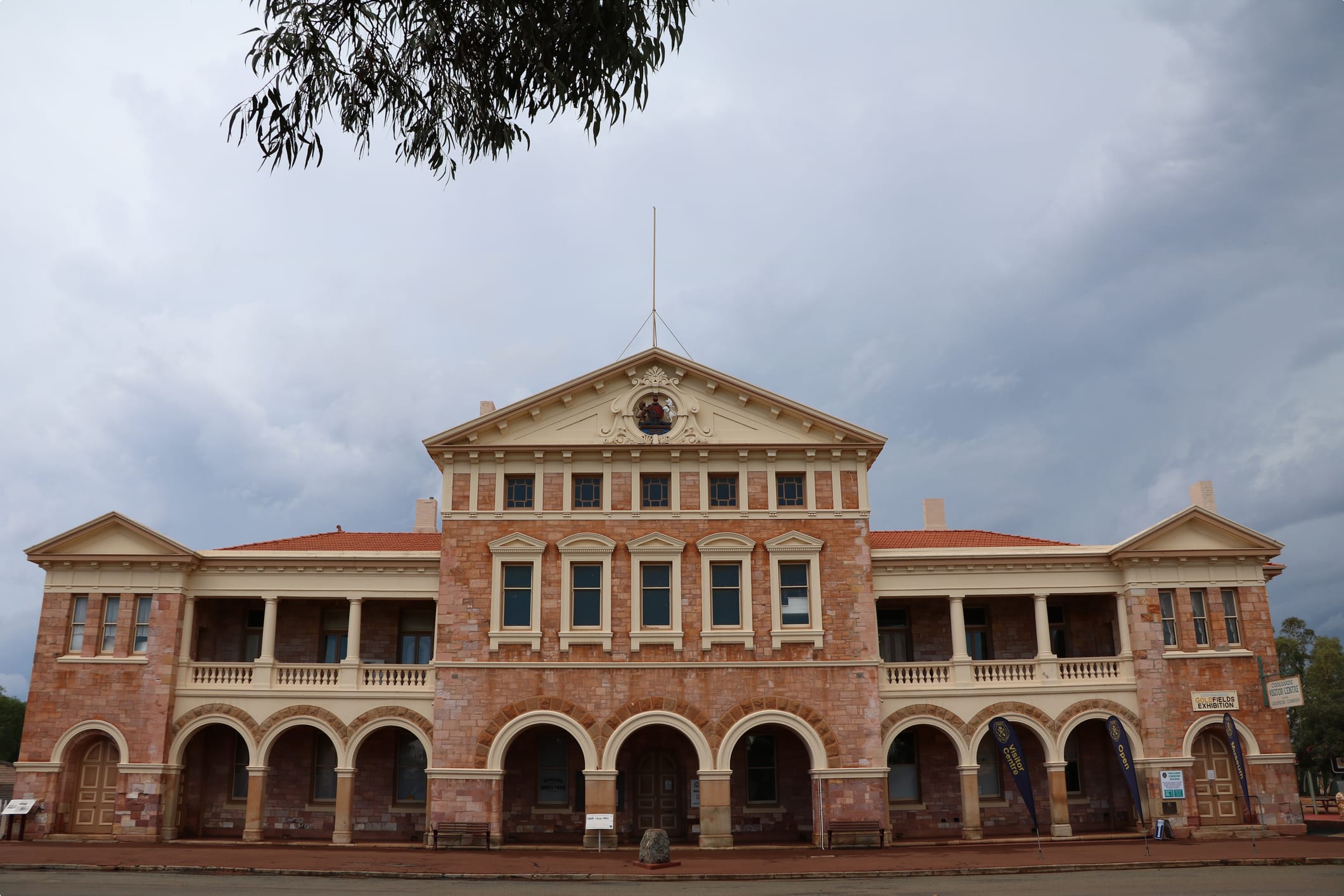
Nearby, Coolgardie’s Pharmacy Museum holds Australia’s best historical pharmaceutical display. It houses scores of 18th and 19th century medicines, advertisements for unusual and exotic patent medicines, and antique tools of the chemist trade. It serves as a reminder of the vital role pharmacists played in the local community in its heyday.
Located in McKenzie Street is another key historic building, Warden Finnerty’s house, also known simply as ‘The Residence’. Warden Finnerty was the person responsible for the naming of the town and granting the original lease which became known as Bayley’s Reward. Built in 1895, the building is a statement of his important position in the community at the time. It is an excellent example of Australian architecture designed to suit the harshness of the desert. The verandas are wide, the windows are louvered and there is a ventilated roof lantern. It also has 12 feet (3.66 m) ceilings which have been clad in ripple metal. Purchased by the National Trust in 1976, it has since been restored to its original condition.
Ben Prior’s Open Air Museum, on the corner of Hunt and Bayley Streets, is a marvellous open air museum. It boasts an eccentric collection of old mining equipment, including mining jogs, drills, antiquated boilers and head frames. Other park attractions include the wagons that brought the Sisters of Mercy nurses to town during the devastating typhoid outbreak of the late 1890s.
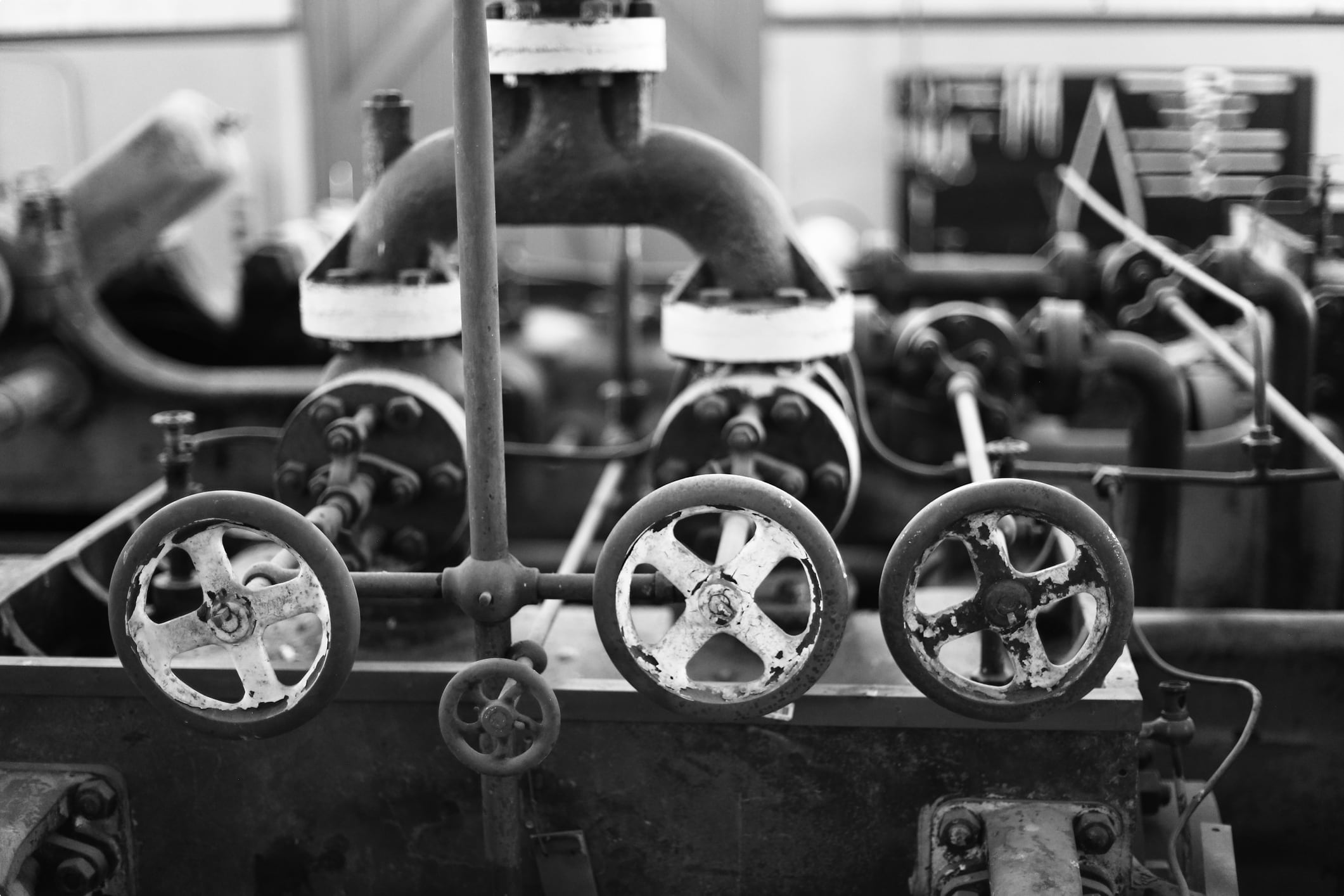
Over in Woodward Street (one block south of Bayley Street) the elegant Old Coolgardie Railway Station (1896) stands intact now turned into the Railway Station Museum. Here you can stand on the platform, where an old steam locomotive and antique carriages give a sense of an earlier era. An extensive displays of railway history and photographs are also on display.
The town cemeteries, the old Pioneer Cemetery and Coolgardie Cemetery, also provide extraordinary insights into what life was like in Coolgardie during the boom period. During this time, many people were buried because of disease, accidents while digging for gold, and deaths in childbirth because of a lack of doctors.
Tour of Coolgardie
You can visit Coolgardie as part of our guided 16 day wildflower tour of Western Australia. For wildflower enthusiasts this is an opportunity to see learn and photograph a collection of Western Australia’s unique wildflowers for a 16 day wildflower escorted tour for senior and mature travellers in a small group of up to 15 people often accompanied on certain days by botanical guide to assist with discussion and identification of the collection of Western Australian wildflowers seen. We travel along the west coast, through the wheatbelt, across natural landscape of the golden outback plains, walk trails in the National park (s) the deserts and salt lakes, see ancient granite outcrops, wild woodland and then on the South West coast see some of the brightest white sand beaches in the world as we tour and view this year’s wildflower season across Western Australia .
Our tour is designed especially for mature and senior travellers. Led by a tour guide chosen for their local knowledge, we move in small groups of around 6-12 like-minded people.
Odyssey Traveller has been serving global travellers since 1983 with educational tours of the history, culture, and architecture of our destinations. Tours are cost inclusive of all entrances, tipping and majority of meals. For more information, click here, and head to this page to make a booking.

Articles about Australia published by Odyssey Traveller:
For all the articles Odyssey Traveller has published for mature aged and senior travellers, click through on this link.
External articles to assist you on your visit to Western Australia:
Related Tours
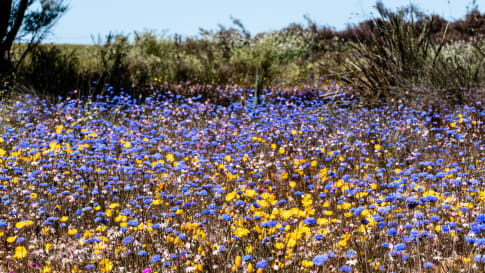
15 days
Aug, SepWildflowers tour of Western Australia
Visiting Western Australia
Escorted small group tour for senior and mature travellers as a couple of solo traveller. Upto 12 people of WA's Wildflower regions including Esperance and the Fitzgerald river National park. Local guides and program leader share knowledge about this fascinating region whilst in bloom.
From A$12,250 AUD
View Tour
22 days
Feb, Mar, Apr, Jun, Aug +1Western Australia tour
Visiting Western Australia
Escorted small group tour for senior and mature travellers as a couple of solo traveller. Upto 12 people of WA's regional History tour. The program including Esperance, Kalgoorlie, Gwalia and Perth. Local guides and program leader share knowledge about this fascinating region.
From A$13,695 AUD
View Tour
14 days
May, Jun, Jul, Aug, SepSmall group tour of Australia's Kimberley
Visiting Western Australia
Escorted small group tour of the Kimberley. We explore and visit The Bungles, Bell Gorge, Mitchell plateau & Halls Creek in the dry season. Amazing landscapes intertwined with Aboriginal communities resident more than 45,000 years.
From A$15,390 AUD
View Tour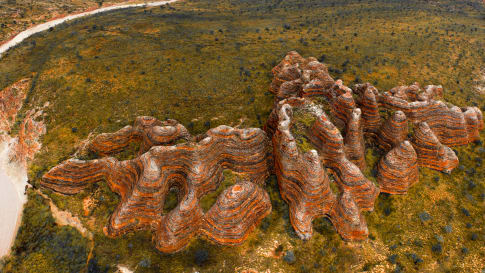
19 days
Sep, Apr, May, Jun, Jul +2Kimberley, Purnululu, Tiwi Islands and Arnhem Land
Visiting Northern Territory, Western Australia
Small group tour touring most of the Australian territory, travelling through the outback and visiting many of the famous sights as well as off the beaten track locations, giving you the opportunity the explore and meet our people in the most remote locations and far north Kakadu and the Kimberley.
From A$14,995 AUD
View Tour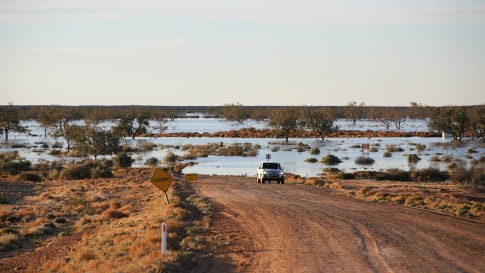
65 days
MarLong tour of Australia for a small group
Visiting New South Wales, Northern Territory
Small group tour for senior couples and solo travellers touring Australia. Travelling through the outback and visiting many of the famous sights as well as off the beaten track locations. Learn about the history of the people who explored the deserts, from indigenous communities to Europeans, as well as Burke and Wills, visit White Cliffs, Marree and far north Kakadu and the Kimberley.
From A$48,995 AUD
View Tour



